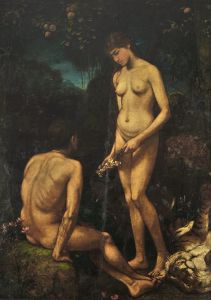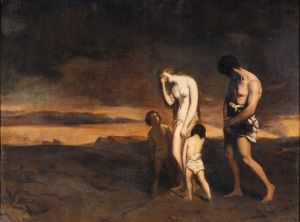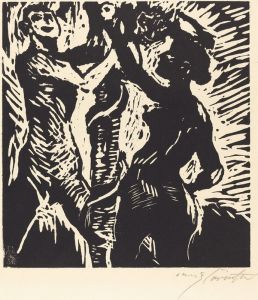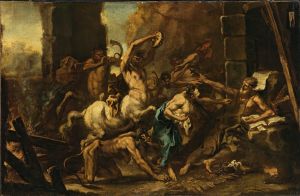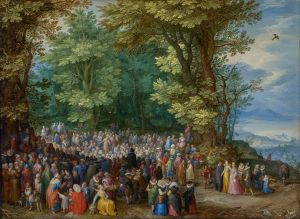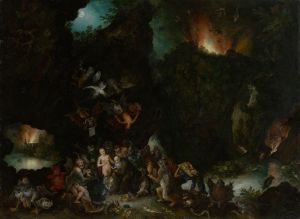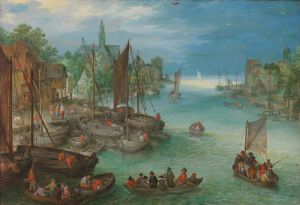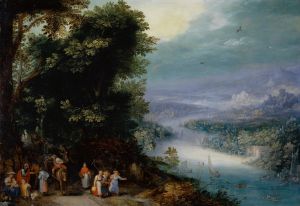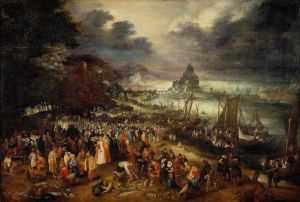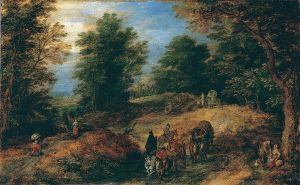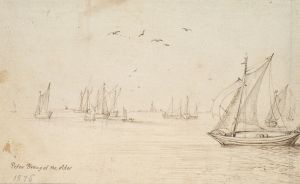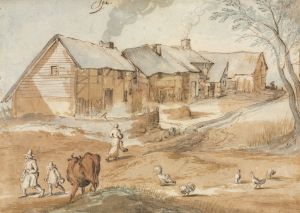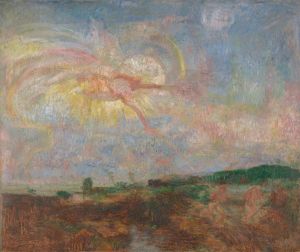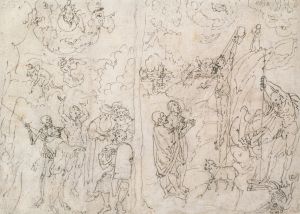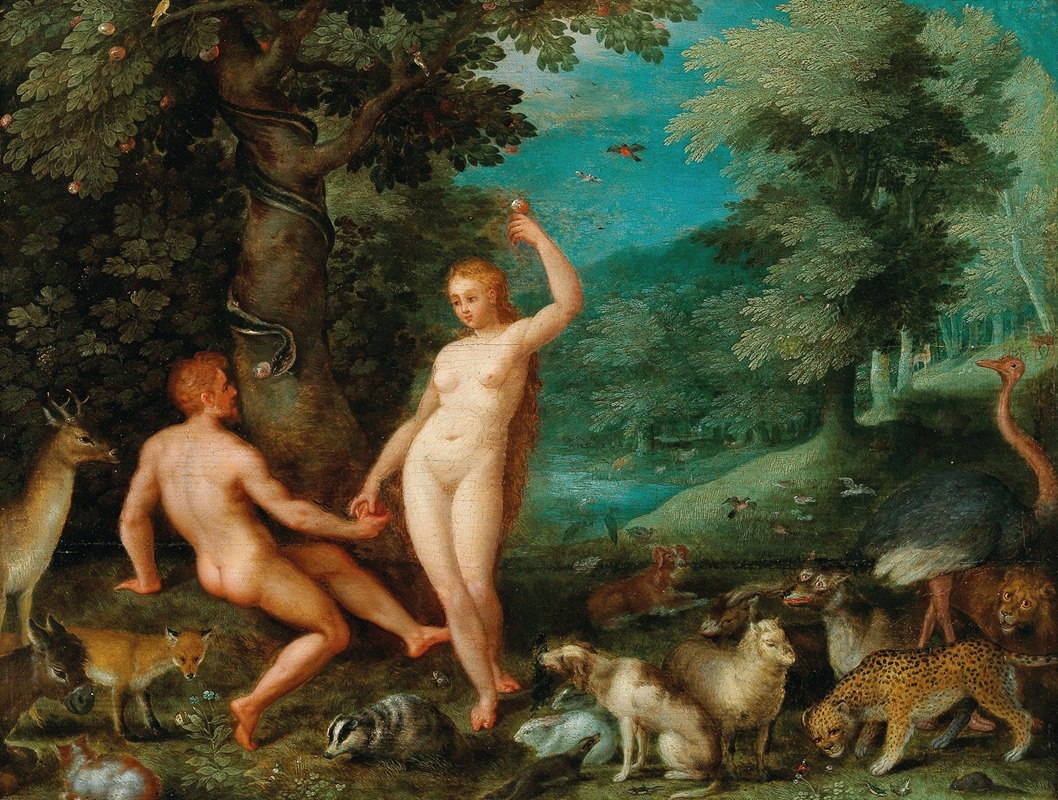
The Temptation Of Adam In Paradise
A hand-painted replica of Jan Brueghel The Elder’s masterpiece The Temptation Of Adam In Paradise, meticulously crafted by professional artists to capture the true essence of the original. Each piece is created with museum-quality canvas and rare mineral pigments, carefully painted by experienced artists with delicate brushstrokes and rich, layered colors to perfectly recreate the texture of the original artwork. Unlike machine-printed reproductions, this hand-painted version brings the painting to life, infused with the artist’s emotions and skill in every stroke. Whether for personal collection or home decoration, it instantly elevates the artistic atmosphere of any space.
Jan Brueghel the Elder's painting The Temptation of Adam in Paradise is a notable work of art from the early 17th century. Created by the Flemish Baroque painter, the artwork depicts the biblical story of Adam and Eve in the Garden of Eden, as described in the Book of Genesis. Brueghel was renowned for his intricate landscapes and detailed depictions of nature, and this painting exemplifies his mastery in these areas.
The composition centers on Adam and Eve, the first humans, as they stand beneath the Tree of Knowledge. Eve is shown offering the forbidden fruit to Adam, a pivotal moment in the Christian narrative of the Fall of Man. Surrounding the figures is a lush and vibrant garden, teeming with a diverse array of animals and plants. Brueghel's attention to detail is evident in the meticulous rendering of flora and fauna, which reflects his deep interest in the natural world and his collaboration with scientists and collectors of his time.
The painting is characteristic of Brueghel's style, which often combined religious themes with elaborate naturalistic settings. His ability to depict a harmonious and idyllic paradise contrasts with the underlying tension of the scene, as the act of temptation foreshadows humanity's expulsion from Eden. The inclusion of numerous animals, both real and fantastical, highlights Brueghel's skill in creating a sense of abundance and variety, which was a hallmark of his work.
Jan Brueghel the Elder was part of a prominent family of artists, being the son of Pieter Bruegel the Elder and the father of Jan Brueghel the Younger. He was a contemporary of Peter Paul Rubens, with whom he frequently collaborated. While Brueghel specialized in landscapes, still lifes, and allegorical scenes, his works often carried moral or religious undertones, as seen in The Temptation of Adam in Paradise.
The exact date of the painting's creation is not definitively known, but it is generally attributed to the early 1600s, during Brueghel's mature period. The painting is housed in a museum collection, though its current location may vary depending on exhibitions or loans. Brueghel's works, including this one, are celebrated for their intricate detail, vibrant color palette, and ability to convey complex narratives through visual storytelling.
This painting remains an important example of Flemish Baroque art and continues to be studied for its artistic and historical significance.





